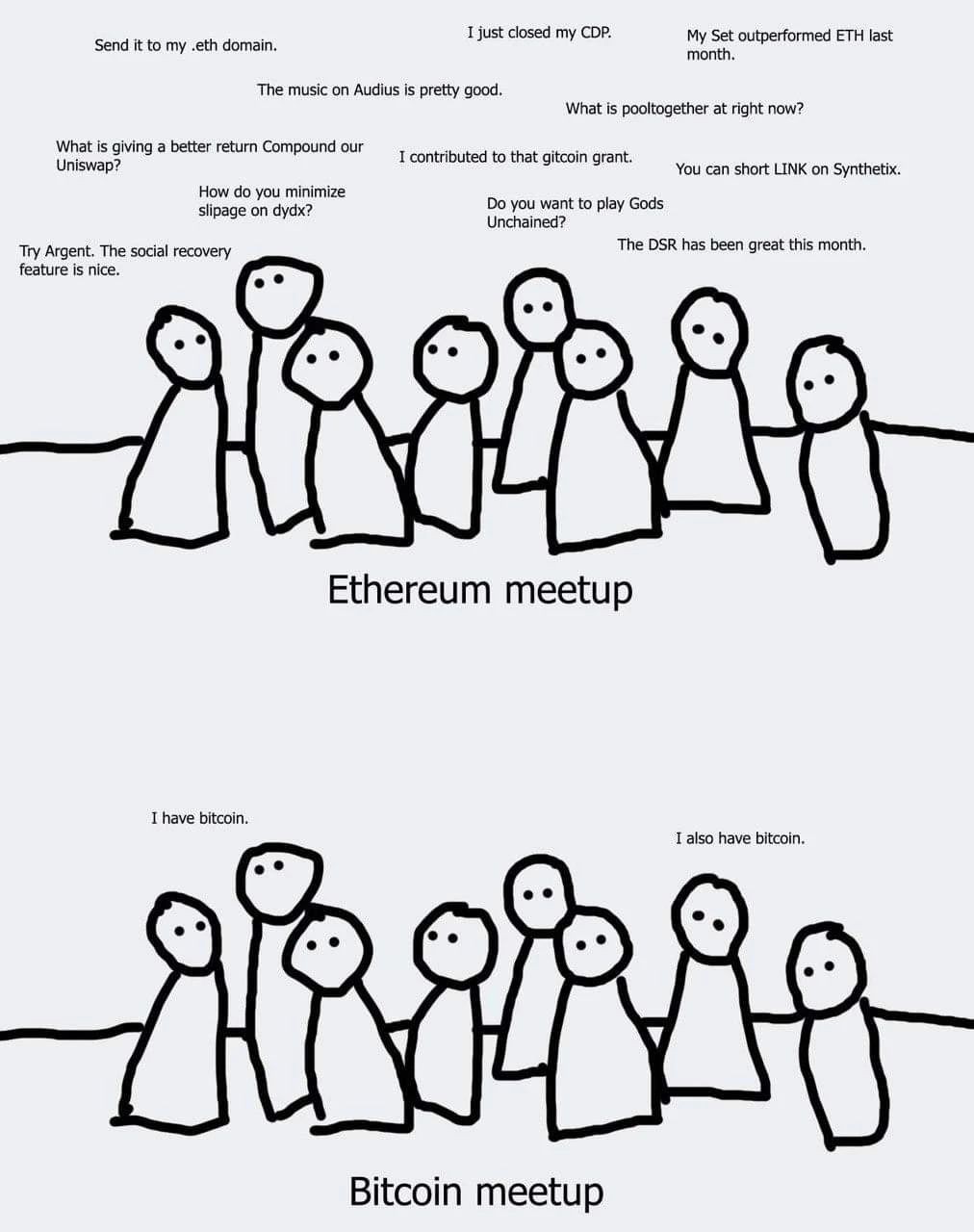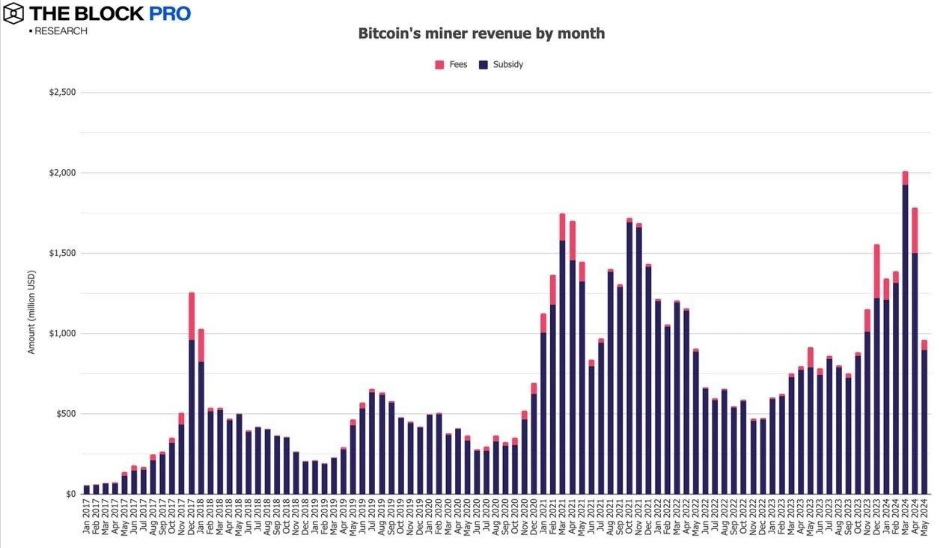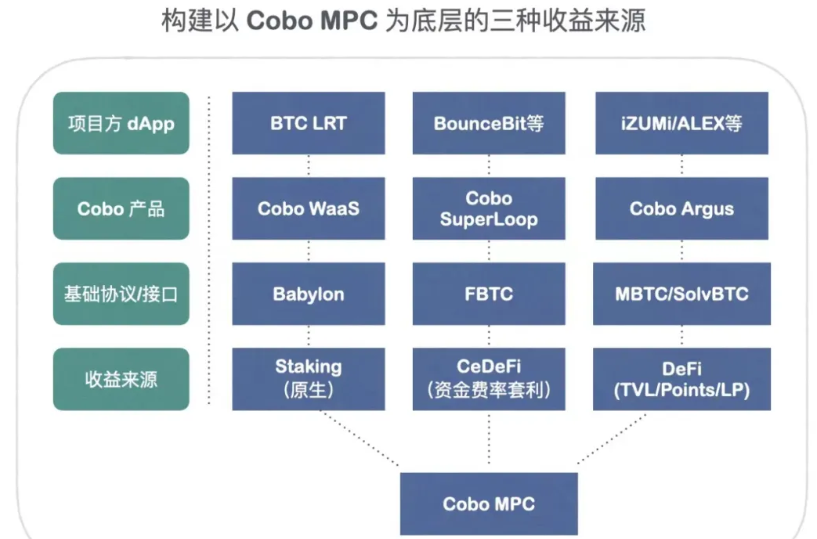Awakening the billions of dormant BTC: asset management and interest-bearing investment
Xiaobai Navigation
Written by: Cobo Global
background
As the oldest first generationcryptocurrency, the Bitcoin market is more concentrated than the Ethereum market. Bitcoin holders who entered the crypto economy early have experienced countless bull and bear cycles and the rise and fall of various investment tools. They have learned about the high risks of crypto assets in repeated "bloodbaths". Therefore, these old Bitcoin big holders are generally more conservative in their investment philosophy and have a higher degree of risk aversion.
On the other hand, to ensureSafetyThe Bitcoin network has made a trade-off between scalability and programmability. This limitation restricts its expansion potential and ability to attract developers. As a peer-to-peer electronic cash system, BitcoinBlockchainIt cannot support the deployment of new financial applications like Ethereum, and it is difficult to become an ideal financial infrastructure.
This has resulted in a very limited variety of financial products available for investors to choose from in the Bitcoin ecosystem. Existing products are often too simple and proactive, lacking complex structural designs and risk hedging strategies, and are unable to meet investors' diversified demands for returns and risks.
A meme about Bitcoin that has been circulating on the Internet pointed this out very pointedly: "As an investment target, Bitcoin seems to have no other choice but to hold it for a long time ('hodl')." This meme conveys the fact that:Although Bitcoin is a powerful means of storing value, there is still a lot of room for expansion in its functions and usage scenarios at the financial management level.

The demand for interest-bearing has given rise to a new model for BTC Staking
The Bitcoin ecosystem is in desperate need of new sources of yield, especially after the Bitcoin halving.
This is mainly due to two demands.
First, miners' income has been greatly reduced. After the fourth halving of Bitcoin, the block reward dropped to 3.125 BTC. Based on the current coin price and electricity costs, the shutdown price for miners is about $55,000, much higher than last year's $14,300. The Block Pro data shows that BTC miners' income in May (due to the fourth halving) decreased by 46% month-on-month to $963 million. If the price of Bitcoin does not rise sharply, miners' income will plummet. If the price of the coin falls further, it may even be difficult to maintain a balance between income and expenditure and be forced to shut down. Therefore, finding a new income model for miners has become a driving force for maintaining the sustainable development of the BTC ecosystem.

Data source: The Block Pro
In addition, early BTC holders have accumulated a large amount of idle assets and are in urgent need of interest-bearing investment channels. According to DefiLlama data, the unilateral BTC yield market size exceeds 10 billion US dollars, of which a considerable portion of funds can only obtain extremely low yields and need to trust centralized institutions to provide services. This reflects the market's demand for BTC idle assets.SafetyRisk-free return demand.
In this context, we see Bitcoin L2 It has achieved explosive growth. A large number of Bitcoin expansion projects and new projects based on BTC have sprung up like mushrooms after rain.
According to DefiLlama data, the number of Bitcoin scaling projects has exceeded 60 in 2023, and the TVL of Bitcoin, Bitcoin bridges, and scaling solutions has exceeded 12 billion US dollars in total. This indicates that Bitcoin is transforming from a single asset to a more dynamic ecosystem, giving birth to more application scenarios, innovative construction, and investment opportunities around Bitcoin.
BTC Staking is considered to be a track with great potential and rationality. As a mature income model that has been fully verified in the EigenLayer module in the Ethereum ecosystem, once introduced into the Bitcoin ecosystem, it will enable Bitcoin to connect with a wider decentralized ecosystem and provide other PoS chains or second-layer networks withSafety性支撑。凭借更高的Safety共识优势,BTC Staking 可实现比以太坊质押更高的安全性和去中心化水平。通过复用现有基础设施,结合 EigenLayer、AVS 等新兴创新技术,BTC Staking 可开拓全新的经济盈利模型,为整个生态系统注入新的收入来源。
BTC Asset Management: Three major interest-bearing schemes for BTC
In the current crypto market, stable and secure income mainly comes from Staking, CeDeFi rate arbitrage and DeFi:
其中,Staking 是指持有加密货币并参与其共识机制形成的被动收入。最典型的如以太坊 POS 质押,用户质押 ETH 并验证交易获得被动收益。Staking 收益较为稳定,无需过多主动操作,但收益率也相对有限。
CeDeFi rate arbitrage refers to the use of the interest rate difference between the centralized finance (CeFi) and decentralized finance (DeFi) systems to conduct interest rate arbitrage transactions to earn income. The CeDeFi arbitrage strategy combines the security of CeFi and the flexibility of DeFi. Users can use CeFi's deep liquidity to perform profitable delta-neutral interest rate arbitrage, while obtaining considerable returns and relatively controllable risks.
DeFi refers to some of the broad emerging sources of income in the decentralized financial ecosystem, such as PointsFi’s accumulated user dividends, liquidity mining, revenue aggregation and other innovative applications. These innovative revenue models often come fromCommunityParticipation, incentive mechanisms, etc. are uncertain, but may also bring excess returns.
Although the above solutions have been verified in Ethereum, there are very successful cases and are naturally suitable for permissionlessBlockchainHowever, for non-Turing-complete Bitcoin, it is not easy to implement due to the limitations of the scripting language. The most effective solution at present is to upgrade the underlying architecture of the Bitcoin network, such as implementing OP Code, OP_CAT, etc., to support more advanced functions and realize truly decentralized on-chain settlement.
But before that, are there some safe solutions that can introduce the three mainstream interest-earning models in the crypto industry into the Bitcoin ecological network while ensuring asset security?
In fact, the multi-party computing (MPC) technology solution can be used to build a diversified interest-earning scheme based on BTC, whether it is BTC LRT fixed income, CeDeFi arbitrage income, or various mining income applied to broader DeFi application scenarios.
MPC is a technology that keeps data private among multiple participants, allowing multiple parties (each with their own private data) to participate in a computation and verify the results without revealing individual private information to others. In practice, each participant holds a piece of cryptographic keys that are collectively used to perform secure transactions or operations.
In an MPC setting, the private key is split into several pieces and distributed to participants. When a transaction needs to be authorized, a specified number of these participants or nodes must provide the key fragments they hold to sign the transaction. This process ensures that no single participant can control the transaction alone. The final digital signature is then verified using the public key, which confirms the authenticity of the transaction without revealing a single key fragment.
MPC is particularly useful for cross-chain transactions, where multiple approvals are required before any action can be taken. MPC offers strong security advantages, including no single point of failure, a flexible signing process, and detailed control over who can access and sign transactions.
It is worth noting that in this use case, Cobo MPC is not a custodial service, but a technical solution applied to Bitcoin asset management solutions, so it is trustless.
We take three asset management solutions of Bitcoin as examples to illustrate how Cobo MPC is applied to them:

In the BTC LRT scenario, Bitcoin holders can deposit BTC assets into Babylon to obtain BTC native income and other AVS benefits.TokenRewards. Babylon is a decentralized trustless Bitcoin staking protocol that uses staked Bitcoin to provide security for PoS chains and second-layer networks through a shared secure open market, thereby extending Bitcoin security to other chains. In return, Bitcoin holders can earn income. Unlike centralized solutions, Cobo MPC provides Bitcoin holders with independentwalletThe address uses a 2/3 threshold signature mechanism to manage Bitcoin, where two private key shards are controlled by the customer. Only when two of the private key shards are passed can specific operations be performed, protecting user assets from external and internal attacks, ensuring that even if one private key shard is leaked, the assets are still safe, thereby ensuring asset security to the greatest extent.
In the CeDeFi model, Bitcoin holders do not need to directly trust their assets toexchange, you can use Cobo MPC and other security technologies to establishexchangeAn independent and isolated over-the-counter custody and settlement network for exclusive asset exchanges. Users lock their bitcoins in this isolated network, and these bitcoins are mapped 1:1 to the exchange’sToken。用户可将映射出的代币投入 CeDeFi 进行操作,如利用不同市场间的资金利率差异开展 delta 中性利率套利交易,从而赚取利率差价收益。而实际的比特币则安全存放在与交易所完全隔离的冷钱包中。托管平台和交易所账户间只会进行必要的资金流动,如结算交易盈亏、支付手续费等,用户可自行设置结算周期并核算收益。这种模式最大限度确保了比特币资产的安全,同时也让持有者能充分利用 CeDeFi 获取丰厚回报。
In the broader DeFi application scenario, Bitcoin holders can deposit BTC through Cobo MPC, mint mBTC tokens of equal value on the Merlin protocol, and then invest these mBTC tokens in
Mining is carried out in various liquidity pools provided by decentralized exchanges such as iZUMi. Based on the preset rules of the Cobo Argus risk control system, the investment strategy and risk exposure of the liquidity pool are personalized to earn low-risk returns.
Whether it is BTC LRT, CeDeFi or DeFi, Cobo MPC solutions have opened up multiple high-return and risk-controlled income paths for Bitcoin holders, maximizing the release of Bitcoin's intrinsic value.
Looking ahead, in addition to crypto assets, Cobo can even include traditional assets such as ETFs in its asset management scope. Since MPC technology can ensure users’ ownership and operation rights over assets, future ETF holders can also use this technology to store physical ETF assets in a custodial wallet, and MPC technology will manage the ETF’s participation in liquidity mining, staking and other operations, thereby achieving interest-bearing value-added.
The article comes from the Internet:Awakening the billions of dormant BTC: asset management and interest-bearing investment
The SEC’s pre-litigation notice against Uniswap reflects the uniqueness of the core value of Web3. Author: @Web3Mario Introduction I saw an interesting news flash when I woke up this morning. Hayden Adams, the founder of Uniswap, tweeted that Uniswap Labs received a notice from the U.S. Securities and Exchange Commission (SEC) today…